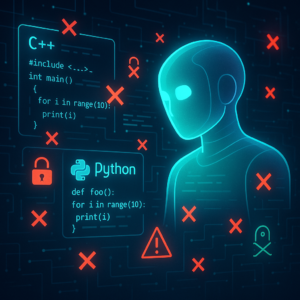Generative Alchemy: Turning Data Into Gold With Diffusion Models

Generative Alchemy: Turning Data Into Gold With Diffusion Models
In the fast-paced world of artificial intelligence, where machines create stunning artwork and churn out text that reads like it was penned by humans, it’s clear that we’ve entered an era where generative modeling is spearheading technological innovation. But how do these generative magic tricks work? Enter diffusion models—a lesser-known powerhouse in this AI parade. This piece unwraps the mystery of diffusion models by delving into Justin Le’s research, which not only sheds light on their mechanisms but also explores exciting applications that could revolutionize how we handle data imbalances in fields like fraud detection.
An Introduction to Generative Goodness
Generative models are like talented artists, trained to capture the essence of existing data and then create new, similar instances. They’ve been used to generate art and text, with big names like DALL-E and ChatGPT leading the charge. These models learn from a batch of training data—a collection of images or text—to create new samples that mimic the original. Among the many types of generative models are the novelties like Diffusion Models, Generative Adversarial Networks (GANs), and Variational Autoencoders (VAEs). But today, we’re zooming into diffusion models specifically.
What Are Diffusion Models, Anyway?
Picture an artist tasked with creating a sculpture. To understand every crevice and curve, they first wrap it in clay, then meticulously remove that clay to reveal a new sculpture. This artistic process mirrors how diffusion models work—by adding chaos, or “noise,” to data and then carefully removing it to create entirely new samples. This two-step artistry is known as the forward and reverse process.
Breaking Down Diffusion Models: The Magic Behind the Curtain
The Forward and Reverse Processes
The forward process is a master class in controlled chaos. Imagine taking a detailed painting and smudging it until it’s unrecognizable; that’s the forward process. It applies noise repeatedly until the original data morphs into a standard normal distribution—a technical term for a common baseline model which acts like a blank canvas. Once it reaches this generic state, the magic begins.
Next up is the reverse process. Starting from this baseline, diffusion models work backwards, gently peeling away the noise to generate a new piece reminiscent of the original data. The artwork that emerges isn’t exactly the same but shares the same style and theme.
Noise and Stochastic Equations
Noise forms the backbone of this intriguing process, introducing randomness so that each new sample is akin yet distinct from its precursor. This randomness is governed by mathematical poetry known as a Stochastic Differential Equation (SDE), specifically the Ornstein-Uhlenbeck equation. Consider it a math wizard’s spell that lets us enact this noisy transformation smoothly and quickly.
Real-World Applications: Battling Data Imbalance
Diffuse models aren’t just pretty faces—they have real-world chops! A compelling example lies in improving fraud detection. Many datasets, such as credit card transactions, have an inherent imbalance—there’s a vast majority of legitimate data and a minuscule amount of fraudulent entries. This imbalance can reduce the efficiency of classifiers, which are systems designed to categorize data.
Enhancing Fraud Detection
Artificially augmenting data using diffusion models can help balance the scales. In this study, Justin Le applied diffusion models to generate samples mimicking fraudulent transactions. By augmenting the training data with this new synthetic data, classifiers showed marked improvement in detecting fraudulent deals—think of it as sharpening their instincts.
Boosting Classifier Performance
The results were illuminating. By training on regular and generated data, machine learning classifiers like XGBoost and Random Forest became more adept at identifying fraud, capturing what they previously missed. There’s a trade-off though—while recall (the ability to catch true frauds) improved, precision (avoiding false alarms) took a slight hit. This trade-off is significant when failing to detect a crime is costlier than a false accusation.
The Art of Refinement: Training Diffusion Models
Training a diffusion model is like teaching an apprentice artist. You show it many examples, it learns how to “noise” and “denoise,” then gradually becomes a master in its own right, capable of creating unique pieces from scratch. This metaphorical artistic journey sees the model witness the forward process and then learn to mimic it in reverse, capturing both the art of adding chaos and refining it into order.
Key Takeaways
- Diffusion models introduce and then refine noise to transform data into new samples that mirror the originals while remaining unique.
- They utilize stochastic equations to control this complex process.
- A practical application emerged in addressing data imbalances, notably improving fraud detection by making classifiers sharper and more aware, albeit with a trade-off in precision.
- Diffusion models represent a flexible, promising future for synthetic data generation in diverse fields, from art to intricate classification challenges.
In the broad landscape of artificial intelligence, diffusion models stand out like master sculptors, borrowing essence from reality, injecting a touch of randomness, and crafting beautifully unpredictable works from the chaos. Whether chiseling into the visual arts or streamlining data challenges, these models are redefining what’s possible in the realm of AI.
Let’s continue exploring these remarkable tools as they evolve and redefine practical data applications—and maybe inspire our inner artisanal spirit along the way!
If you are looking to improve your prompting skills and haven’t already, check out our free Advanced Prompt Engineering course.
This blog post is based on the research article “Generative Modeling with Diffusion” by Authors: Justin Le. You can find the original article here.




